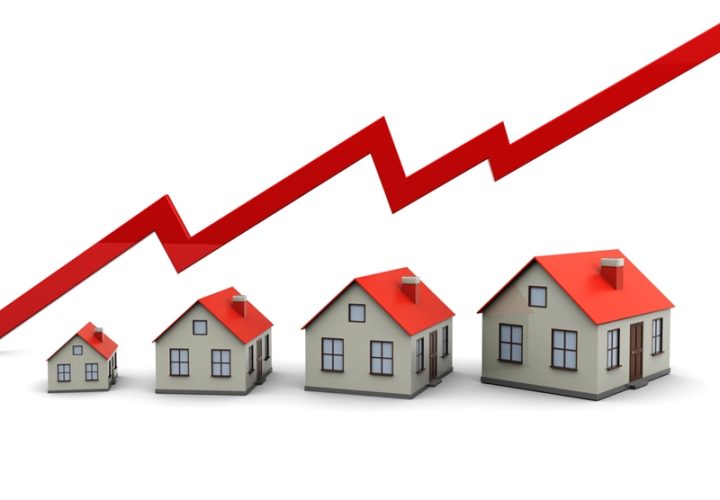
No move from the RBA, but big decisions ahead for property’s next wave of investors
RBA holds cash rate steady as inflation edges higher
The Reserve Bank of Australia (RBA) has decided to keep the official cash rate unchanged at 3.60 per cent in its September 2025 meeting. The decision comes after August inflation figures showed a modest rise, with the Consumer Price Index (CPI) lifting to 3.0 per cent from July’s 2.8 per cent. This keeps inflation at the top end of the RBA’s 2–3 per cent target band.
Why the RBA held steady
While some had speculated about a further cut following August’s reduction of 25 basis points, most economists expected the central bank to pause this month. The higher-than-anticipated inflation reading left little room for the RBA to ease further. Policymakers emphasized the importance of taking a long-term approach, balancing inflation control with the need to support economic growth.
Major banks and research houses now believe the RBA may wait until at least November, and possibly longer, before making its next move. NAB has forecast no further cuts until May 2026.
Impact on borrowers and homeowners
For mortgage holders, the hold brings short-term stability. Interest expenses will remain unchanged, giving households breathing space after the rapid shifts in recent years. Industry leaders have urged borrowers not to assume further cuts are imminent. Instead, they recommend speaking with lenders about rate reductions, exploring refinancing options, and considering a wider range of products beyond the big four banks.
The Finance Brokers Association of Australia (FBAA) stressed that budgeting on the expectation of cuts is risky, particularly given the RBA’s cautious stance.
Implications for property buyers and investors
For prospective home buyers, the hold provides an opportunity to plan strategically. Brokers suggest that now is a good time to organize finance, as government initiatives such as the expanded Home Guarantee Scheme will soon offer added support for first-home buyers with deposits as low as 5 per cent.
Investor sentiment is also expected to remain steady. Without the immediate prospect of further easing, property buyers have time to assess opportunities rather than rushing decisions.
Looking ahead
The RBA has signaled that its next major decision will be influenced by September’s inflation data, due ahead of the November board meeting. Until then, households and businesses should prepare for an extended period of stability. While this may not bring instant relief to borrowers, it does provide a clearer runway for financial planning.
What the RBA’s “hold” means for aspiring property investors
The Reserve Bank’s decision to maintain the cash rate at 3.60 per cent has wide ramifications across the property market. While the hold may appear neutral on the surface, its ripple effects will influence borrowing capacity, market competition, risk profiles, and timing decisions — all of which matter greatly for someone stepping into property investment for the first time.
- Borrowing capacity remains constrained (for now)
One of the most direct impacts of the RBA holding rates is on borrowing power. With the benchmark rate unchanged, banks are unlikely to aggressively loosen lending criteria, meaning first-time investors may find themselves facing tighter serviceability tests.
Because lenders factor in buffers for rate rises, even though the “official” rate is on hold, many borrowers will still be assessed assuming higher rates. This limits how much debt a first-time investor can access, which in turn constrains the size or quality of property that can be acquired.
However, compared with a rising-rate environment, this hold provides more certainty and removes the immediate risk of rate hikes derailing finance approvals.
- Competition heats up — especially from larger investors
Rate stability often encourages confidence in the property market. For seasoned or well-capitalised investors, the hold can act as a green light to bid more competitively, knowing financing costs are not increasing in the short term.
Indeed, recent data show property investors are borrowing at record levels, putting upward pressure on prices and crowding out first-time entrants. These investors often have stronger buffers and deeper capital reserves to absorb shocks, whereas first-time investors tend to be more sensitive to interest-rate shifts and cash flow fluctuations.
Thus, while the hold levels the playing field relative to a hike, the playing field is still tilted toward those who can move quickly and have access to capital.
- Timing becomes more strategic
A hold signals caution from the RBA — it suggests they are monitoring inflation data, economic momentum, and wage growth before making further adjustments. In effect, first-time investors may gain a window to plan, gather capital, do due diligence, and position themselves before potential further rate cuts (or, conversely, before rates become less favourable again).
If the economy softens and inflation remains under control, markets expect cuts later in the year. Analysts are watching the Q3 inflation print and other key indicators. But if inflation surprises upward, the RBA may delay cuts or even reintroduce a tightening bias.
That ambiguity means first-time investors must balance acting early (to lock in today’s conditions) versus waiting (to capitalise on potential improvements). Having a flexible finance structure and contingency plans will be critical.
- Cash flow risk must be managed carefully
For new investors, the biggest danger with locked-in rates is overstretching cash flow. A small increase in interest rates, vacancy periods, or maintenance costs can quickly turn a “profitable” rental into a cash drain.
Because the RBA’s pause doesn’t guarantee future rate cuts, first-time investors should build in buffers (e.g., assuming interest rates 0.5-1.0 pp higher than current levels) and stress-test scenarios (e.g., higher vacancy, higher repair costs). Over-leveraging is especially risky in markets with tighter rental yields or regulatory changes.
- Leverage tax incentives — but don’t rely solely on them
Negative gearing and depreciation remain powerful tools for property investors in Australia. When interest rates are stable (or viewed as likely to fall), investors may lean more heavily on these tax offsets to improve returns.
But for first-time investors, relying solely on tax advantages is risky. A property must still perform at the cash-flow level and capital growth level to be worthwhile. Don’t let tax benefits mask underlying vulnerabilities in the investment.
- Location and market selection matter more than ever
With borrowing constraints and higher competition, first-time investors can no longer rely on brute leverage. Picking markets with strong fundamentals — population growth, vacancy tightness, infrastructure investment, local employment — becomes critical to protect downside risk.
In addition, sub-markets (e.g. satellite suburbs, well-located units) may offer more accessible entry points while still offering growth potential. With the rate environment less volatile in the short term, having a sharper local insight gives a competitive edge.
- Use this hold period to prepare, not procrastinate
Because the RBA’s hold provides a more predictable backdrop, now is an opportune moment for first-time investors to get their ducks in a row:
- Obtain pre-approval (know your borrowing limit, loan structure)
- Build contingency reserves for interest-rate buffers, repairs, vacancy
- Engage professionals: property advisers, tax/accounting advice, mortgage brokers
- Scout deals and analyze zones, growth corridors, yield trends
- Monitor economic indicators — inflation, wages, lending growth, RBA commentary
While the hold doesn’t guarantee ideal conditions forever, it grants breathing space to methodically build a foundation rather than rush blindly.
Final thoughts
The RBA’s decision to hold the cash rate may look like a stalemate, but for first-time property investors, it carries strategic implications. In a constrained borrowing environment, success will lean heavily on prudent financial structuring, careful market selection, and disciplined risk management.
This is not the time to rush in based on speculation — it’s a time to plan. Use the stability to your advantage, but always assume that volatility or surprise moves remain on the horizon.
For further insights on property investment, avoiding common pitfalls and staying informed about market conditions. reach out to John Tsoulos or Frank Pennisi at IFP Advisory on (08) 8423 6176. Your investment success depends on making informed, strategic decisions.
IFP Advisory is an Accredited ASPIRE Property Advisor Network advisor and all professionals are Qualified Property Investment Advisors (QPIA). Property investing is about purchasing a property that aligns with your goals and investment strategy. You should never be sold an investment. Know your numbers! If you invest wisely and strategically, the Australian residential property market can be a rewarding venture.




